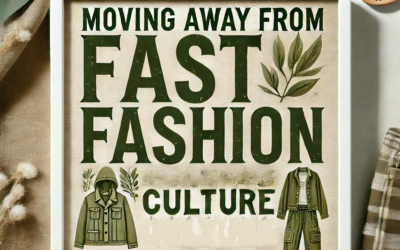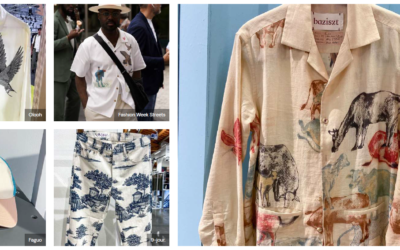Textile in space is a dream that human beings have seen beyond the use of textiles in mere clothings as a covering.
As we continue our journey to reach the stars following with the previous chapter of Textile in Space, we will surely come to know some of the amazing applications of textile in both space and aerospace. We have already come to know some of the key features for space textiles (such as fiber, yarn, fabric) which are essential to be converted into intricate and highly modern aero-crafts.
Nonetheless, a good strength to weight ratio, high abrasion resistance, extremely light-weight, flexibility, durability, comfortability, mechanical and chemical resistance are some of the compulsory features of textiles in this regard. And keeping this in mind, the developed technical textiles are serving in this textile space field with no sweat!
Textile in space: In Aircraft Manufacturing- When Dream Becomes Reality to Reach the Space!
Textiles have been used by human beings since the pre-historic time. Only the recent researches for the past few decades have led to the concept of developing technical textiles in space. One of the major fields of applications of textile is in the process of aircraft manufacturing and related products. Surely, getting to know some of the applications will give us a glimpse on how our dream to reach the stars in becoming a reality!
-
Rotor Blade:
The broken parts of rotor blade can operate as projectile and form external effect. So, woven structure and material such as Kevlar, Nylon, glass fiber metal resign, aromatic polyamide and carbon/epoxy composite structures are used to decrease the impact damage. These textile materials co-operate with flight surface and help the rotor inner side for covering against ballistic damage.
-
Aircraft Interior Design, another example of textile in space:
Inside the aircraft and spacecraft- from furnishing textiles to wall covering, floor carpet, seat & seat belts, curtains and other interior designs are formed from textile composites. In the automotive sector as well as aircraft, spacecraft and onboard ships, drive belts are now used in the engine. In the past, they were primarily made of rubber or flexible plastic. Now coated with textiles or textile mixtures have established durability, comfortability, safety in many applications. They must determine qualities that affect in everyday use to clean easily, to be fire –resistant and free of pollutants that could vaporize and pollute the air. Modern textile materials like microfibers, nanotechnology and new plastics have remodel the use of textiles in interiors.
The Interior of a spacecraft for which technical textile materials are one of the the primary elements to manufacture. Courtesy: Unspash.
-
Parachute:
Parachutes are necessary for the protection for the pilots, aviators and passengers of the aircraft. Raw materials used in the parachutes are high performance fibers such as Nylon, Polyester, Kevlar, Nomex and so on. More specifically, parachutes are made up of high tenacity fire resistant material called ‘Rip-stop Nylon 6.6 fabric’ with tough and durable coatings for heat and air retention. Some other important characteristics for these materials to obtain are UV protection, heat and abrasion resistant, water proofness, high specific strength and light weight.
Parachute systems for space and military, an example of textile in space. Courtesy: Aerospace America.
-
Space Suit:
A space suit, mostly worn by astronauts, is a pressurized garment which is useful during space flights. This suit performs as the ultimate protective clothing that protects the astronauts from damaging conditions in the space where a single sand can be dangerous for its extreme speed. It is also known as Extra Vehicular Mobility unit (EMU).
From feet to head, spacesuit consists of many parts which performs various tasks like containing tubes that supply oxygen, protecting from high pressure and dust in space, containing electric conductors etc. Under the suit, astronauts wear another piece of clothing named liquid cooling and ventilation garment that interlinks with the tubes. Water flows through the tubes to keep astronaut cool. Since, containing oxygen is a must in order to survive in space, a good oxygen chamber is required. Hence, on the back of the space suit, there is a backpack made from technical textiles that holds oxygen and removes carbon dioxide to make easy breathing system for astronauts. It also supplies electricity for the suit. According to the required functional purpose, materials like Dacron, Neoprene, Kevlar, Spandex etc. are used to make spacesuit.
Man Wearing Space Suit, taking textile in space. Courtesy: Pixabay.
-
G-Suit:
G-Suit is a special flight suit worn by aviators, astronauts or fighter pilot in aircraft who are commanded to go against high levels of acceleration force or gravitational force(g). Also, owing to the name as Anti-Gravity Suit, this item is designed to avoid a black-out and g-Loc (g-induced loss of consciousness) generated by the blood pooling in the lower part of the body when under acceleration. This suit is, therefore, necessary as black-out and g-Loc have caused a number of disastrous aircraft accidents previously.
A dummy wearing an Anti-g Suit trousers and cummerbund fitted over a flying suit. Source: Wikipedia.
G-suits consists of artificial inflatable bladders, having air or liquid that can be pressurized using a g-sensitive valve. This also has controlled firm to legs and abdomen under high values of g.
Future Development of Textile in Space Products-What is Coming Next?
Every kilogram that needs to be launched in a spacecraft is so important that it increases both fuel utilization and costs! Lightweight, high strength, cost efficiency, ease of working with the materials and safety are all parameters that should be achieved in developing textiles. Innovations like incorporating bionics into the development of new textiles can open entirely new solutions for engineers and scientists.
A spacecraft during its launch and ready to reach the stars! Photo Taken at the Kennedy Space Center, USA. Courtesy: Unsplash.
In 2015, NASA revealed to try to get humans living on Mars by 2030. If these plans are to be performed successfully, then it’s a consideration that textile materials can be made not only from a clothing and safety perspective, but also can be used structurally to understand the optimal living conditions. Nonetheless, the designers have to work days and nights to figure out the best possible anatomy of a spacesuit! As the weather in Mars is extremely unfavorable, no specimens have yet returned to Earth from Mars which is still the biggest challenge in making space suits. For this regard, NASA is preparing the Futuristic Z-2 space suit of Z-2 prototype for the next generation!
As we come to an end to our space journey, we certainly realize textile is not just used only for daily uses or enhancing beauty but also for protecting from hazardous environments in air, outer-space, Mars or any other outer planet. This field of application is nothing but innovative and cool! Thus, textile especially, technical textiles enabled us to conquer any innovative plan about space and decrease mortal accidents caused by dangerous space area and also allow us to definitely fulfill our dream to reach the stars!
By Team Bespoke:
Mentor: Tasphia Zaman (TFD 44, ID: 2018-1-6-009)
Leader: Khadiza Sharmin (TFD 45, ID: 2019-1-6-015)
Executive: Nahema Haque Khushe (TFD 46, ID: 2020-1-6-002)
References:
Image 1: https://unsplash.com/photos/n463SoeSiVY
Image 2: https://unsplash.com/@nasa
Image 3: https://unsplash.com/photos/NCvvr837fz8
As you seem to be both tech savvy and fashionista, you will enjoy our premium article on Textile in space: Flying up to reach the stars!
To know the biggest fashion trends of 21st century, you can visit here! Moreover, if you want to know the future of fashion industry after Covid-19, you can click here!
And if you want to read one of our premium case studies on Fast Fashion Vs Slow Fashion, you can go here!
You can also read our interesting and well researched article on: Architecture Fabric: The New Use of Textiles as A Building Material




What i don’t understood is in fact how you’re no longer actually a lot more smartly-appreciated than you may be right now. You’re so intelligent. You recognize therefore considerably with regards to this matter, produced me in my view imagine it from numerous varied angles. Its like men and women don’t seem to be interested unless it is something to accomplish with Woman gaga! Your individual stuffs excellent. Always take care of it up!
Hello, I enjoy reading all of your post. I wanted to write a little comment to support you.|